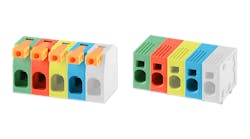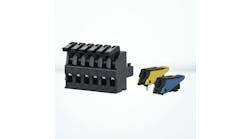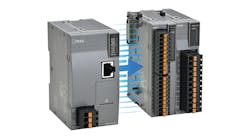Jake and his assistant were searching. The outbuilding had some ambient monitors for oxygen and carbon monoxide (CO), since it housed the continuous emission monitoring system (CEMS) for the nearby boiler. The stack sample being analyzed was potentially suffocating or otherwise lethal, so sirens would sound locally and beacons would flash, alerting any occupants that they should leave and seek fresh air immediately. Jake calibrated the monitors every quarter, but a recent corporate audit recommended that this was insufficient if the alarm did not also show in the control house—a continuously attended location. Soon, the operations manager entered a work order to bring this alarm into the house.
If your facility has been around for more than a couple of decades, it’s not uncommon that the 20% spares left in local panels by the original builders have long ago been consumed. Projects come through, process specialists come up with other points to monitor, and before long, local junction boxes have every spare pair occupied. In Jake’s case, the next nearest place in which he found a spare for a new alarm was in the panel for the crude furnace preheater. This panel accompanied the addition of the air preheater decades ago, which was itself installed many years after the original furnace was constructed. Inside, it was still full of relays wired for burner management and the orderly startup of the preheater. When Jake opened the panel, it was like a journey back in time. A routine task got interesting when he tried to move some wires to check if they were spares; a boring day became exciting when the furnace unexpectedly shut down.
No instrument specialist or operator wants an exciting day. And so, it’s become common that no one is eager to poke at anything for fear that some unforeseen interconnection will cause a process upset or shutdown. Over years of operation, contacts corrode, vibration loosens once-tight terminations, and heat, cold, humidity and time take their toll on every sensor and logic solver. What had been shiny and tight and certifiable decades ago is now a liability—it’s “brittle.”
How do we deal with brittle? Should we do nothing until months or years in the future when the process is offline? What if a vital measurement or interlock means we must open and work in such scarily fragile enclosures while the process is running profitably? Although we have cultures where instrument and electrical—I&E—is considered infrastructure (a perspective I would argue is less than optimal), it remains that the consequences of brittle or shabby delivery of measurements and interlocks have grave consequences for productivity—not to mention other priorities such as safety and the environment.
[pullquote]
If Jake had foreseen the impact of his actions before opening the preheater panel, what might he have done differently? 20/20 hindsight says, why wasn’t someone doing a tug-test and retorqueing of all the terminals in the panel during the last process outage? Often the issue is, people you’d entrust with such tasks are consumed with putting out fires—attending to the hot issues of recent memory. When production is profitable, the business has little patience for downtime, so “nice to do” preventive care is usually postponed. This sort of circumstance is likely to remain the norm until business leaders comprehend how achieving asset integrity requires adequate, trusted, trained staffing.
Let’s try imagining what robustness—the opposite of brittle—would be like. Robustness would mean even when we inadvertently trigger some otherwise spurious (false) signal, the control system/logic solver doesn’t invoke a trip. But old relay logic and skid mounted PLCs don’t normally attempt to use even simple voting to invoke a trip—mechanical equipment suppliers and consultants would sooner protect their liability than employ any cleverness (or expense) to avoid a spurious trip, unless specifically directed by the client. Guys like Jake don’t normally have much input when those choices are being made, early in the project.
Do your specifications address terminal block choices? Some of us experience pushback from electrical contractors when we suggest spring-clamp terminals, but perhaps this can be overcome with a little investment in tools and training. Maybe a few camo baseball caps would help. If our projects endure for decades, this relatively mundane choice of terminal blocks might be a simple and effective bulwark against future brittleness.






